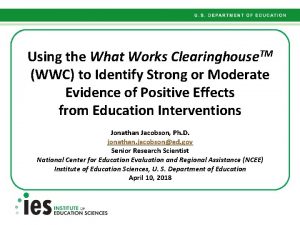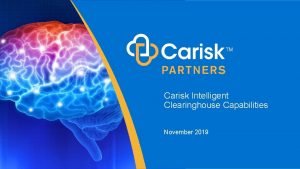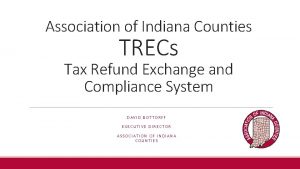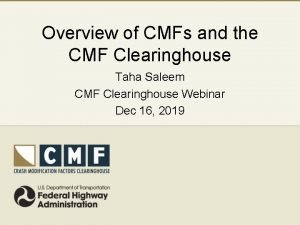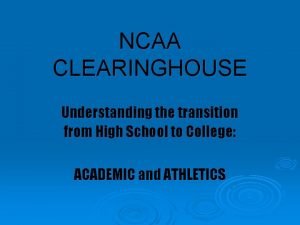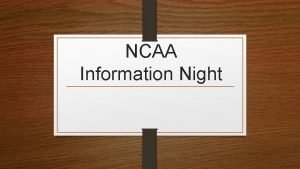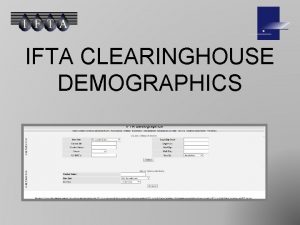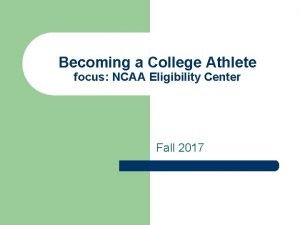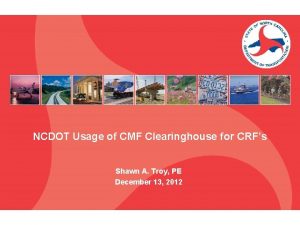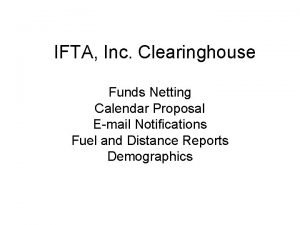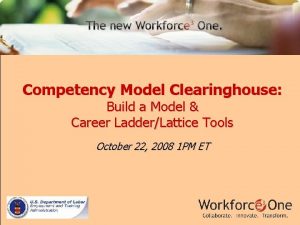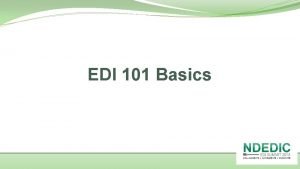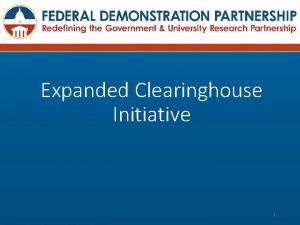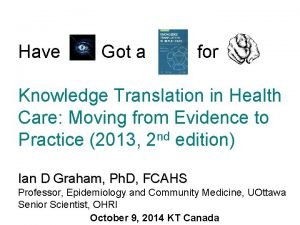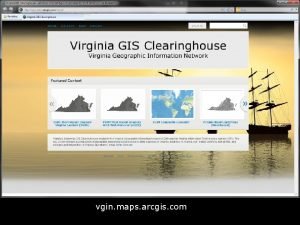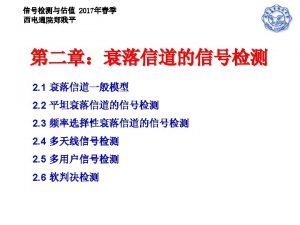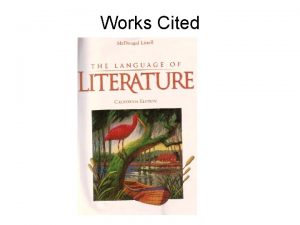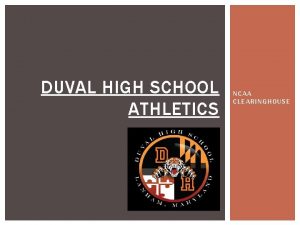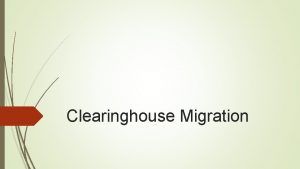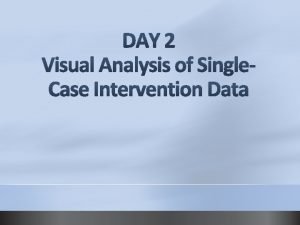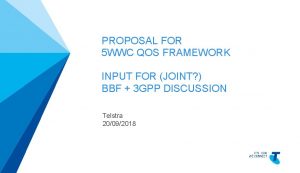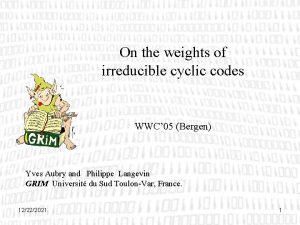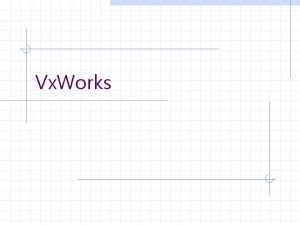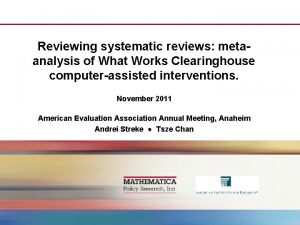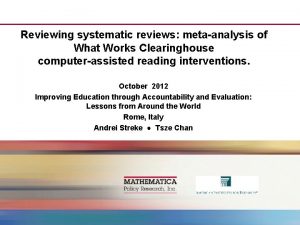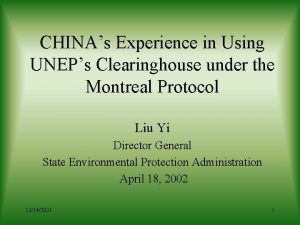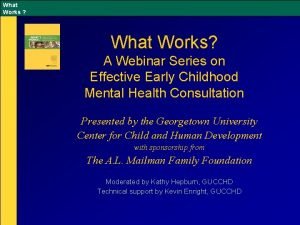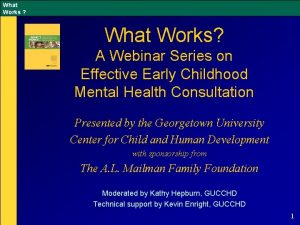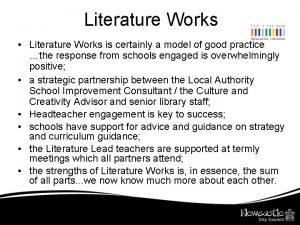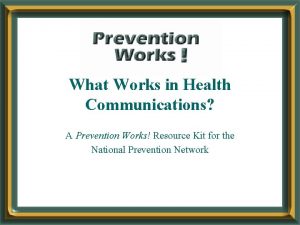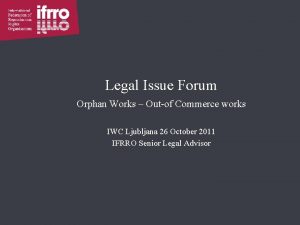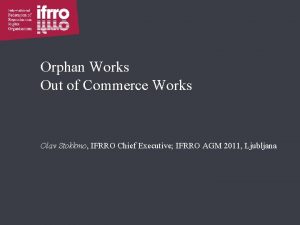Using the What Works Clearinghouse TM WWC to

























- Slides: 25

Using the What Works Clearinghouse. TM (WWC) to Identify Strong or Moderate Evidence of Positive Effects from Education Interventions Jonathan Jacobson, Ph. D. jonathan. jacobson@ed. gov Senior Research Scientist National Center for Education Evaluation and Regional Assistance (NCEE) Institute of Education Sciences, U. S. Department of Education April 10, 2018

Learning Goals § § Understand the evidence tiers defined in federal education law and ED regulations Learn how to find strong evidence and moderate evidence from WWC reviews of individual studies Learn how to find strong evidence and moderate evidence (as well as promising evidence) from WWC systematic reviews (intervention reports and practice guides) Learn how to connect with the WWC 2

Evidence Tiers in ED Law and Regulations **Evidence in these tiers needs to demonstrate a statistically significant positive effect of a project component on a relevant outcome [ED regulations require strong and moderate evidence to be from studies meeting WWC standards, version 2. 1 or 3. 0] Strong Evidence** [WWC] (based on at least 1 well-designed, wellimplemented experimental study) Moderate Evidence** [WWC] (based on at least 1 well-designed, wellimplemented quasi-experimental design study) Promising Evidence** (based on at least 1 well-designed, wellimplemented correlational study with statistical controls for selection bias) Evidence that Demonstrates a Rationale 3 Sources: 20 USC 7801 (21) and EDGAR, 34 CFR 77. 1

Requirements of Individual Studies Providing Strong Evidence or Moderate Evidence Characteristic Strong Evidence Moderate Evidence WWC study rating (under version 2. 1 or 3. 0 of the WWC Handbook) Meets standards without reservations Meets standards with reservations or Meets standards without reservations Study findings for relevant outcomes Statistically significant and positive (favorable) for at least one relevant outcome, with no overriding statistically significant and negative effects on relevant outcomes reported in the study or in a corresponding WWC intervention report (under version 2. 1 or 3. 0 of the WWC Handbook) Study sample (alone or in a combination of studies) Large sample (350+ individuals) and multi-site sample (e. g. , >1 State, county, city, district, or campus) Overlap with proposed populations / settings Overlap with both required Overlap with either required Source: EDGAR, 34 CFR 77. 1 4

Search in the Reviews of Individual Studies Database 5

Check for the Handbook Version, Study Rating, and at least one Statistically Significant and Positive Finding 6

Look for Statistically Significant, Favorable Findings 7

Check for No Overriding Findings in the Study Itself… 8

…or in a Corresponding WWC Intervention Report 9

Look for a Large Sample and a Multi-Site Sample 10

Check for Overlap of Populations and/or Settings 11

Requirements of a WWC Intervention Report Providing Strong Evidence or Moderate Evidence Characteristic Strong Evidence Moderate Evidence Intervention report findings (under version 2. 1 or 3. 0 of the WWC Handbook) for relevant outcomes “Positive effect”, with no reporting of a “negative effect” or “potentially negative effect” “Positive effect” or “potentially positive effect”, with no reporting of a “negative effect” or “potentially negative effect” Extent of evidence Medium to large Overlap with proposed Overlap with both populations / settings required Overlap with either required Source: 34 EDGAR CFR 77. 1 12

Requirements of a WWC Intervention Report Providing Promising Evidence Characteristic Promising Evidence Intervention report findings “Positive effect” or “potentially positive (under any version of the WWC effect”, with no reporting of a “negative Handbook) for relevant effect” or “potentially negative effect” outcomes Extent of evidence Either “small” or “medium to large” Overlap with proposed populations / settings Overlap with neither required Source: EDGAR, 34 CFR 77. 1 13

Find What Works Displays Results from Intervention Reports 14

Interventions with Positive or Potentially Positive Effects 15

From the Intervention Page, Look for the PDF of the Report 16

Confirm the Handbook Version Used for the Report 17

Look at the Effectiveness Rating and the Extent of Evidence 18

Check Overlap of Populations and/or Settings 19

Requirements of a WWC Practice Guide Providing Strong Evidence or Moderate Evidence Characteristic Strong Evidence Moderate Evidence (under version 2. 1 or “Strong evidence” 3. 0 of the WWC Handbook) base for practice recommendation cited for a proposed project component “Strong evidence” base or “moderate evidence” base Overlap with proposed populations / settings Overlap with either required Overlap with both required Source: EDGAR, 34 CFR 77. 1 20

Requirements of a WWC Practice Guide Providing Promising Evidence Characteristic Promising Evidence (under any version of the WWC Handbook) for practice recommendation cited for a proposed project component “Strong evidence” base or “moderate evidence” base Overlap with proposed populations / settings Overlap with neither required Source: EDGAR, 34 CFR 77. 1 21

Practice Guides Prepared Under Version 2. 1 or 3. 0 Released: November 2013 22

NOTE: “Minimal Evidence” Recommendations Do NOT Qualify as Strong, Moderate, or Promising Evidence 23

Ways to Connect with the WWC § The WWC Home Page – whatworks. ed. gov https: //ies. ed. gov/ncee/wwc/ § The WWC Help Desk – http: //ies. ed. gov/ncee/wwc/Contact. Us. aspx § Follow the WWC – http: //facebook. com/whatworksclearinghouse – https: //twitter. com/What. Works. ED – http: //ies. ed. gov/newsflash/? url=%2 Fncee%2 Fwwc %2 Findex%2 Easp&site=What+Works+Clearinghouse 24

Thank you! jonathan. jacobson@ed. gov
 Wwc practice guides
Wwc practice guides Nrswa revision
Nrswa revision Highly closed question
Highly closed question What is a competency
What is a competency Carisk intelligent clearinghouse
Carisk intelligent clearinghouse Fratture noe
Fratture noe Trecs local gov clearinghouse indiana
Trecs local gov clearinghouse indiana Cmfclearinghouse
Cmfclearinghouse Ncaa clearinghouse paperwork
Ncaa clearinghouse paperwork Www.eligibilitycenter.org
Www.eligibilitycenter.org Clearinghouse student tracker
Clearinghouse student tracker Ifta clearinghouse
Ifta clearinghouse Affordable housing clearinghouse
Affordable housing clearinghouse Ncaa clearinghouse 2017
Ncaa clearinghouse 2017 Clearinghouse applicant initiated
Clearinghouse applicant initiated Cmf clearinghouse
Cmf clearinghouse Fastener clearinghouse
Fastener clearinghouse Ifta clearinghouse
Ifta clearinghouse Interpersonal skills
Interpersonal skills Tesia clearinghouse
Tesia clearinghouse National student clearinghouse student tracker
National student clearinghouse student tracker Clearinghouse cbus
Clearinghouse cbus Fdp expanded clearinghouse
Fdp expanded clearinghouse Kt clearinghouse
Kt clearinghouse Apd background screening
Apd background screening Vgin clearinghouse
Vgin clearinghouse
